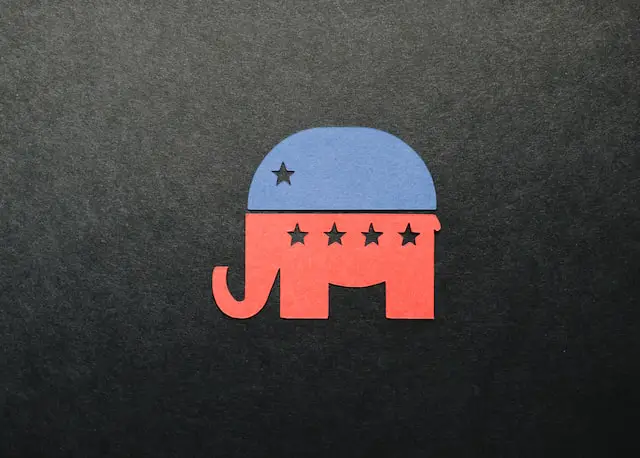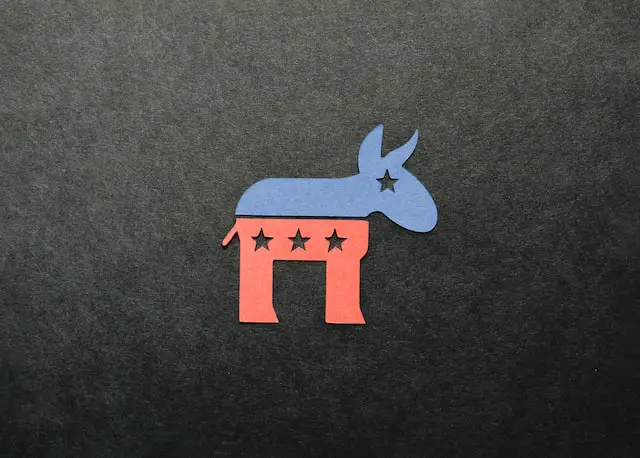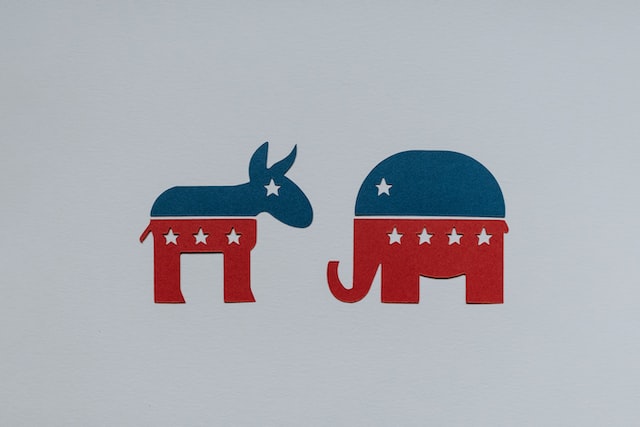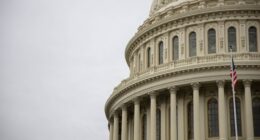The main difference between a Democrat and a Republican is their ideology. Democrats are typically considered to be more liberal, while Republicans are considered to be more conservative. There are also some differences in the policies that each party supports. For example, Democrats tend to support higher taxes for the wealthy, while Republicans tend to support lower taxes.
Who is a republican?
(Photo by Kelly Sikkema on Unsplash )

A republican is a member of the political party that favors a republic form of government. The party believes in smaller government, limited taxation, and individual rights. The republicans also support a strong military and believe in personal responsibility.
Who is a democrat?
(Photo By DonkeyHotey on flickr)

A democrat is someone who believes in government by the people. They think that everyone should have an equal say in government decisions, and they believe in the rule of law. They also believe in social and economic justice, and they think that the government should help provide for the needs of all citizens.
The different ideologies of each party
The Democratic Party is traditionally considered to be the more liberal of the two major political parties in the United States. They are generally supportive of government intervention in the economy and social welfare programs. The Republican Party is traditionally considered to be the more conservative of the two major political parties in the United States. They are generally supportive of free market principles and limited government intervention in the economy.
The history of the republican party
The Republican Party is one of the two major political parties in the United States, along with the Democratic Party. It was founded in 1854 by anti-slavery activists and politicians who opposed the expansion of slavery into new territories.
The party was formed in response to the passage of the Kansas-Nebraska Act, which allowed territories to decide for themselves whether or not to allow slavery. The Republican Party was formed as a coalition of various groups, including former Whigs, Free-Soilers, and Know-Nothings.
The party’s first presidential candidate was John C. Fremont in 1856, who lost to Democrat James Buchanan. However, the party gained momentum and was able to win the presidency in 1860 with the election of Abraham Lincoln.
During Lincoln’s presidency, the Civil War broke out between the Union (North) and the Confederacy (South). The Republican Party was seen as the party of the Union and supported the abolition of slavery, which was ultimately achieved with the passage of the 13th Amendment to the U.S. Constitution.
After the Civil War, the Republican Party became the dominant political party in the United States, controlling the presidency for most of the next 70 years. During this time, the party advocated for policies like high tariffs, federal spending on infrastructure, and immigration restrictions.
In the 20th century, the party shifted towards a more conservative platform, advocating for smaller government, lower taxes, and free-market policies. The party’s most notable presidents in this era include Ronald Reagan and George W. Bush.
Today, the Republican Party continues to be one of the major political parties in the United States, with a platform that includes conservative social and economic policies.
The history of the democratic party
The Democratic Party is one of the two major political parties in the United States, along with the Republican Party. It is the oldest political party in the United States, tracing its roots back to the Democratic-Republican Party, which was founded by Thomas Jefferson in the late 18th century.
The Democratic Party as it is known today was formed in the 1820s, under the leadership of Andrew Jackson, who served as the party’s first president. Jackson was a populist who believed in expanding the powers of the presidency and promoting the interests of the common people.
During the 19th century, the Democratic Party was the dominant political party in the United States, controlling the presidency for most of the time. The party’s platform at this time was based on principles like states’ rights, limited government, and opposition to high tariffs.
In the early 20th century, the Democratic Party began to shift towards a more progressive platform, advocating for policies like the regulation of business, labor rights, and women’s suffrage. The party’s most notable presidents during this era include Franklin D. Roosevelt, who introduced the New Deal, and Harry S. Truman, who oversaw the post-World War II era.
In the latter half of the 20th century, the Democratic Party continued to advocate for progressive policies, including civil rights, environmental protection, and expanded social welfare programs. The party’s most notable presidents during this era include Lyndon B. Johnson, who signed the Civil Rights Act and the Voting Rights Act, and Bill Clinton, who implemented policies like the North American Free Trade Agreement and welfare reform.
Today, the Democratic Party continues to be one of the major political parties in the United States, with a platform that includes progressive policies on issues like healthcare, climate change, and social justice.
The different platforms of each party
When it comes to the different platforms of each party, there are a few key areas where they differ. Democrats tend to be more focused on social issues, while Republicans are more focused on economic issues. When it comes to taxation, Democrats tend to favor higher taxes on the wealthy, while Republicans favor lower taxes across the board. On government spending, Democrats tend to favor more government spending on programs like education and infrastructure, while Republicans tend to favor less government spending overall. Finally, when it comes to regulation, Democrats tend to favor stricter regulations on businesses and industries, while Republicans tend to favor lighter regulations.
The different policies of each party
The Democratic Party is the oldest political party in the United States. Founded in 1828 by Andrew Jackson, the Democrats believe in a stronger central government with more services and regulations. They are usually considered more liberal on social issues such as abortion and same-sex marriage. The Democratic Party is also supportive of affirmative action and gun control measures.
The Republican Party was founded in 1854 by Abraham Lincoln. Republicans believe in a smaller central government with less regulation. They are typically considered more conservative on social issues such as abortion and same-sex marriage. The Republican Party is also generally supportive of business interests and deregulation.
The Types of republicans
There are three types of republicans: Fiscal conservatives, Social conservatives, and Libertarians.
Fiscal conservatives believe in small government and low taxes.
Social conservatives believe in traditional values and support gun rights and religious freedom.
Libertarians believe in personal freedoms and limited government.
The types of democrats
There are two types of Democrats: The progressive wing and The moderate wing.
The progressive wing is represented by Bernie Sanders and Elizabeth Warren. They believe in things like universal healthcare, free college tuition, and a living wage.
The moderate wing is represented by people like Hillary Clinton and Joe Biden. They believe in things like keeping Social Security and Medicare intact, balancing the budget, and investing in infrastructure.
The benefits for the USA under the democratic and republican party
Both the Democratic and Republican Parties have implemented policies that have had positive impacts on the United States. Here are some of the benefits that the country has seen under both parties:
Benefits of the Democratic Party:
- Economic Growth: Democratic presidents have overseen periods of strong economic growth, including the presidencies of Bill Clinton and Barack Obama. The party has advocated for policies like progressive taxation, infrastructure spending, and access to affordable healthcare, which have all contributed to economic growth and job creation.
- Social Welfare Programs: The Democratic Party has been a champion of social welfare programs like Social Security, Medicare, and Medicaid, which provide a safety net for vulnerable populations. The party has also pushed for the expansion of healthcare coverage and increased access to education and job training.
- Civil Rights: Democrats have been at the forefront of the fight for civil rights and have pushed for policies that promote equality and justice. Democratic presidents have signed landmark legislation like the Civil Rights Act, the Voting Rights Act, and the Americans with Disabilities Act.
- Environmental Protection: Democratic administrations have prioritized environmental protection, including the signing of the Paris Climate Agreement under President Obama. The party has advocated for policies that reduce greenhouse gas emissions and promote the use of renewable energy sources.
- Foreign Relations: Democratic presidents have often taken a multilateral approach to foreign relations, working with other countries to address global challenges like terrorism and climate change. The party has also pushed for diplomacy and conflict resolution over military intervention.
Benefits of the Republican Party:
- Tax Policy: Republican administrations have implemented policies that lower taxes, which can stimulate economic growth and job creation. The party has advocated for a simpler tax code with lower rates for individuals and corporations.
- National Security: Republicans have traditionally been seen as strong on national security, with a focus on military strength and a proactive approach to counterterrorism. The party has also advocated for a strong defense budget to maintain military readiness.
- Free Market: The Republican Party has championed free-market policies, including deregulation and reduced government intervention in the economy. The party believes that this promotes innovation and competition, which leads to economic growth.
- Family Values: Republicans have been associated with policies that promote traditional family values, including opposition to abortion and support for traditional marriage. The party has also pushed for policies that promote personal responsibility and self-reliance.
- Second Amendment: The Republican Party has traditionally been seen as supportive of Second Amendment rights, including the right to own firearms. The party has advocated for policies that protect this right and oppose gun control measures.
Both the Democratic and Republican Parties have implemented policies that have had positive impacts on the United States. While there are different opinions on specific policies, these are some of the benefits that the country has seen under both parties.
Featured Image By – Photo by Kelly Sikkema on Unsplash







